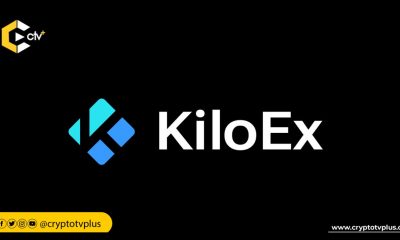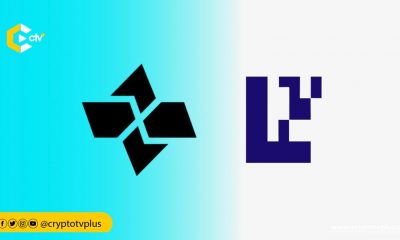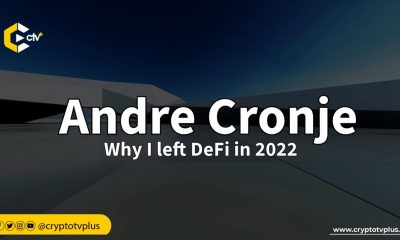FEATURED
Mangrove’s “Offer-is-Code Approach” to Solving DeFi Key Liquidity Challenges

The DeFi ecosystem is not without its challenges, with liquidity being a key concern. Two primary issues identified by Gabija Tuinaite are fragmentation and capital efficiency. At ethCC 2023 in Paris, Gabija Tuinaite, Head of Product at Mangrove, introduced a possible solution through what she referred to as the “Offer-is-Code Approach.”
Liquidity fragmentation arises from the dispersion of liquidity across various protocols and markets for the same assets. While aggregators have attempted to alleviate this issue, they often fall short due to latency issues and the exploitation of slippage by aggregators for profit, Tuinaite opined. She pointed out that the Offer-is-Code Approach proposed by Mangrove could mitigate liquidity fragmentation and enhance capital efficiency.
Mangrove is an order book-based Decentralized Exchange (DEX) that empowers liquidity providers to post arbitrary smart contracts as offers.
According to Tuinaite, on Mangrove, when an offer is matched, the execution of the smart offer code begins with a “last look” mechanism. This code evaluates whether it is still advantageous to fulfill the offer, considering potential changes in market conditions since the offer’s creation. If the code determines the offer is beneficial, the liquidity sourcing phase follows. This step involves attempting to source the liquidity required for the trade. However, various factors can lead to unsuccessful liquidity sourcing, such as the liquidity being moved elsewhere, she explained.
Moreover, Tuinaite analyzed that the last look mechanism involves that if User A seeks to buy ETH and is matched with 1000 USDC from User B, User B can evaluate the price on another exchange like Uniswap. If the price is more favorable there, User B can decline User A’s offer and sell on Uniswap instead, ultimately optimizing their profits.
Additionally, there is liquidity amplification that empowers makers to pledge their liquidity across multiple markets simultaneously. Tuinaite illustrated this with a scenario where a maker commits 1000 USDC to three different markets. This versatility resembles the traditional concept of leverage on other exchanges, yet with broader flexibility.
Ultimately, Mangrove’s approach allows makers to integrate diverse logic into their smart offers, enabling liquidity to be sourced from various DeFi protocols, the Product Head said.
Introducing Kandel: A Discrete AMM Strategy for Optimal Returns
Tuinaite introduced Kandel, an automated market-making (AMM) strategy that operates on discrete principles, utilizing on-chain order flow to repost offers instantly with zero latency. According to her, Kandel strategically posts bids and asks within a predefined price range. Should an ask be fulfilled, Kandel promptly places a bid on the opposite side of the book, ensuring a “buy low, sell high” approach and capitalizing on the spread. This strategy aligns with continuous AMMs like Uniswap V3 but offers a unique advantage in addressing volatility by adjusting the spread or grid size.
Tuinaite explains that by adjusting the spread in response to varying levels of volatility, users can optimize their returns. This discrete AMM approach, exemplified by Kandel, thus presents a more effective means of managing and profiting from market volatility compared to continuous AMMs.
The distinction between discrete AMMs like Kandel and continuous AMMs such as Uniswap V3 is that Discrete AMMs offer superior returns due to their ability to trade on both sides of the book, fine-tuning the spread based on volatility. This stands in contrast to the fee-associated limitations of continuous AMMs, Tuinaite explained.
Tuinaite compared Mangrove’s “one market, multiple contracts” approach with the conventional “one market, one contract”, concluding that the latter’s need to create new markets for different liquidity provision methods perpetuates liquidity fragmentation. Mangrove’s liquidity sourcing via the “one market, multiple contracts” approach eliminates the need for creating new markets for each liquidity provision.
Liquidity providers can become flexible with their smart offers without being constrained by the market’s structure, enhancing capital efficiency.
Read also:
Glimpse of hope for users as Curve Finance plans to refund users
What do you think of this article? Share comments below.

























1 Comment